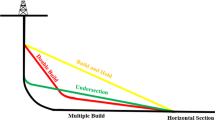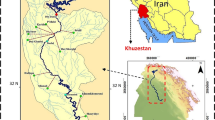Abstract
Real-time control (RTC) methods, which utilize real-time information to control the existing infrastructures in combined sewer systems, are effective in reducing combined sewer overflows (CSOs). However, it is difficult to compare the performance of RTC systems due to their diverse frameworks and application scenarios. This study provides a comparison of different RTC strategies through two proposed evaluation indices: computing load rate (CLR) and double-baseline normalized distance (DBND). CLR represents the computing load as a percentage of the control step interval, while DBND indicates the control effect normalized by the lower and upper bounds of the control process. Three different RTC methods, heuristic control (HC), model predictive control (MPC), and reinforcement learning control (RLC), were compared and studied through the two indices. In this study, RLC trains an artificial intelligence agent to regulate sewage pumps during rainfall events for CSO reduction. A combined sewer system in eastern China is taken as a case study. According to the simulation results and indices: (i) CLR is an effective index for the computing cost and efficiency evaluation of diverse RTC systems. (ii) DBND enables the comparison of control effects between RTC systems that differ in rainfall events and the capacities of combined sewer systems. (iii) HC, MPC, and RLC vary in computing time costs and control effects, and among them, RLC is the most cost-effective control method.





Similar content being viewed by others
References
Bowes BD, Tavakoli A, Wang C et al (2020) Flood mitigation in coastal urban catchments using real-time stormwater infrastructure control and reinforcement learning. J Hydroinformatics. https://doi.org/10.2166/hydro.2020.080
Butler D, Schutze M (2005) Integrating simulation models with a view to optimal control of urban wastewater systems. Environ Modell Softw 20:415–426. https://doi.org/10.1016/j.envsoft.2004.02.003
Fu G, Butler D, Khu S-T (2008) Multiple objective optimal control of integrated urban wastewater systems. Environ Modell Softw 23:225–234. https://doi.org/10.1016/j.envsoft.2007.06.003
Garcia L, Barreiro-Gomez J, Escobar E et al (2015) Modeling and real-time control of urban drainage systems: A review. Adv Water Resour 85:120–132. https://doi.org/10.1016/j.advwatres.2015.08.007
Giraldo JM, Leirens S, Díaz-Granados M et al (2010) Nonlinear optimization for improving the operation of sewer systems: the Bogota Case Study. In International Congress on Environmental Modelling and Software, Ottawa, Ontario, Canada, pp 2229–2236
Gu X, Liao Z, Zhang G et al (2017) Modelling the effects of water diversion and combined sewer overflow on urban inland river quality. Environ Sci Pollut Res 24:21038–21049. https://doi.org/10.1007/s11356-017-9686-x
Jafari F, Mousavi SJ, Yazdi J et al (2018) Real-time operation of pumping systems for urban flood mitigation: single-period vs multi-period optimization. Water Resour Manag 32:4643–4660. https://doi.org/10.1007/s11269-018-2076-4
Joseph-Duran B, Jung MN, Ocampo-Martinez C et al (2014) Minimization of sewage network overflow. Water Resour Manag 28:41–63. https://doi.org/10.1007/s11269-013-0468-z
Joseph-Duran B, Ocampo-Martinez C, Cembrano G (2015) Output-feedback control of combined sewer networks through receding horizon control with moving horizon estimation. Water Resour Res 51:8129–8145. https://doi.org/10.1002/2014wr016696
Lacour C, Schutze M (2011) Real-time control of sewer systems using turbidity measurements. Water Sci Technol 63:2628–2632. https://doi.org/10.2166/wst.2011.159
Liao Z, Gu X, Xie J et al (2019) An integrated assessment of drainage system reconstruction based on a drainage network model. Environ Sci Pollut Res 26:26563–26576. https://doi.org/10.1007/s11356-019-05280-1
Lund NSV, Borup M, Madsen H et al (2020) CSO reduction by integrated model predictive control of stormwater inflows: A simulated proof of concept using linear surrogate models. Water Resour Res. https://doi.org/10.1029/2019wr026272
Lund NSV, Falk AKV, Borup M et al (2018) Model predictive control of urban drainage systems: A review and perspective towards smart real-time water management. Crit Rev Env Sci Tec 48:279–339. https://doi.org/10.1080/10643389.2018.1455484
Mailhot A, Talbot G, Lavallee B (2015) Relationships between rainfall and Combined Sewer Overflow (CSO) occurrences. J Hydrol 523:602–609. https://doi.org/10.1016/j.jhydrol.2015.01.063
Mahmoodian M, Carbajal JP, Bellos V et al (2018) A hybrid surrogate modelling strategy for simplification of detailed urban drainage simulators. Water Resour Manag 32:5241–5256. https://doi.org/10.1007/s11269-018-2157-4
Meneses EJ, Gaussens M, Jakobsen C et al (2018) Coordinating rule-based and system-wide model predictive control strategies to reduce storage expansion of combined urban drainage systems: The case study of lundtofte. Denmark Water. https://doi.org/10.3390/w10010076
Mollerup AL, Mikkelsen PS, Sin G (2016) A methodological approach to the design of optimising control strategies for sewer systems. Environ Modell Softw 83:103–115. https://doi.org/10.1016/j.envsoft.2016.05.004
Mullapudi A, Lewis MJ, Gruden CL et al (2020) Deep reinforcement learning for the real time control of stormwater systems. Adv Water Resour 140:103600. https://doi.org/10.1016/j.advwatres.2020.103600
Ocampo-Martinez C, Ingimundarson A, Puig V et al (2008) Objective prioritization sing lexicographic minimizers for MPC of sewer networks. IEEE Trans Control Syst Technol 16:113–121. https://doi.org/10.1109/tcst.2007.899741
Ocampo-Martinez C, Puig V (2010) Piece-wise linear functions-based model predictive control of large-scale sewage systems. IET Contr Theory Appl 4:1581–1593. https://doi.org/10.1049/iet-cta.2009.0206
Saliba SM, Bowes BD, Adams S et al (2020) Deep reinforcement learning with uncertain data for real-time stormwater system control and flood mitigation. Water 12:3222. https://doi.org/10.3390/w12113222
Schütze M, Campisano A, Colas H et al (2004) Real Time Control of urban wastewater systems—where do we stand today? J Hydrol 299:335–348. https://doi.org/10.1016/j.jhydrol.2004.08.010
Singh A, Sarma AK, Hack J (2020) Cost-effective optimization of nature-based solutions for reducing urban floods considering limited space availability. Environ Process 7:297–319. https://doi.org/10.1007/s40710-019-00420-8
Soriano L, Rubio J (2019) Impacts of Combined Sewer Overflows on surface water bodies. The case study of the Ebro River in Zaragoza city. J Clean Prod 226:1–5. https://doi.org/10.1016/j.jclepro.2019.04.033
Sun C, Puig V, Cembrano G (2020a) Real-time control of urban water cycle under cyber-physical systems framework. Water. https://doi.org/10.3390/w12020406
Sun C, Svensen JL, Borup M et al (2020b) An MPC-enabled SWMM implementation of the astlingen RTC benchmarking network. Water. https://doi.org/10.3390/w12041034
Sutton RS, Barto AG (2018) Reinforcement learning: An introduction. 2nd edn. MIT Press
van der Werf J, Kapelan Z, Langeveld J (2021) Quantifying the true potential of Real Time Control in urban drainage systems. Urban Water J 18(10):873–884. https://doi.org/10.1080/1573062X.2021.1943460
Vezzaro L, Grum M (2014) A generalised Dynamic Overflow Risk Assessment (DORA) for Real Time Control of urban drainage systems. J Hydrol 515:292–303. https://doi.org/10.1016/j.jhydrol.2014.05.019
Wang X, Tian W, Liao Z (2021) Offline optimization of sluice control rules in the urban water system for flooding mitigation. Water Resour Manag 35:949–962. https://doi.org/10.1007/s11269-020-02760-9
Wolfs V, Willems P (2017) Modular conceptual modelling approach and software for sewer hydraulic computations. Water Resour Manag 31:283–298. https://doi.org/10.1007/s11269-016-1524-2
Zhi G, Liao Z, Tian W et al (2020) Urban flood risk assessment and analysis with a 3D visualization method coupling the PP-PSO algorithm and building data. J Environ Manage 268:110521. https://doi.org/10.1016/j.jenvman.2020.110521
Acknowledgements
The authors wish to thank Zhichao Zhao, Changqing Ye, and Junjie Wang for their helpful comments on this work.
Funding
This study was financially supported by the National Natural Science Foundation of China (grant no. 52170102) and Key Laboratory of Surveying and Mapping Science and Geospatial Information Technology of Ministry of Natural Resources (grant no. 2020–3-3).
Author information
Authors and Affiliations
Contributions
Conceptualization, Z.L., Z.Z., and W.T.; Methodology, Z.L., and W.T.; Validation, Z.L., J.X., and X.G.; Formal Analysis, Z.Z.; Investigation, Z.Z.; Resources, W.T., and J.X.; Data Curation, W.T.; Writing—Original Draft Preparation, W.T.; Writing—Review & Editing, Z.Z.; Visualization, X.G.; Supervision, Z.L.; Project Administration, Z.L.; Funding Acquisition, Z.L.
Corresponding author
Ethics declarations
Ethical Approval
Not applicable.
Consent to Publish
All authors agree to publish.
Consent to Participate
Not applicable.
Conflict of Interest
The authors declare no conflicts of interest.
Additional information
Publisher's Note
Springer Nature remains neutral with regard to jurisdictional claims in published maps and institutional affiliations.
Supplementary Information
Below is the link to the electronic supplementary material.
Rights and permissions
About this article
Cite this article
Liao, Z., Zhang, Z., Tian, W. et al. Comparison of Real-time Control Methods for CSO Reduction with Two Evaluation Indices: Computing Load Rate and Double Baseline Normalized Distance. Water Resour Manage 36, 4469–4484 (2022). https://doi.org/10.1007/s11269-022-03221-1
Received:
Accepted:
Published:
Issue Date:
DOI: https://doi.org/10.1007/s11269-022-03221-1




